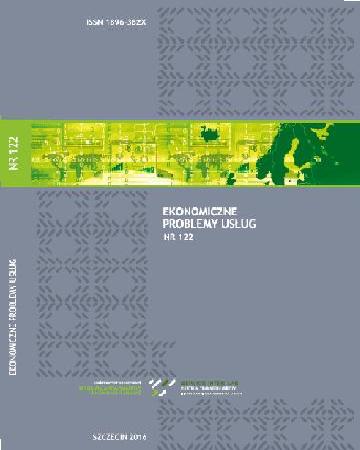
ISSN: 1896-382X
eISSN: 2353-2866
OAI
DOI: 10.18276/epu.2018.131/1-29



Issue archive /
nr 131 (1) 2018
Global cross border trade – a global view
| Authors: |
Aleksandra
Ptak
Politechnika Częstochowska Wydział Zarządzania Tomasz Lis Politechnika Częstochowska Wydział Zarządzania |
| Keywords: | Internet cross-border trade shopping abroad e-consumers |
| Data publikacji całości: | 2018-05-24 |
| Page range: | 12 (291-302) |
| Klasyfikacja JEL: | B17 F63 |
Abstract
The Internet makes us stop feeling borders between countries. Via the Internet one can buy every-thing - from food products, through clothes, cosmetics, detergents, tickets, furniture, ending up on means of transport, flats or houses. Consumers use it to acquire information locally, nationally and internationally at the most important moments of the purchase path (Kiesler, 2014), (Meijers, 2014). The value of the global e-commerce market in 2014 amounted to nearly 1.5 trillion Euros. Cross-border trade is considered to be one of the most interesting and dynamic phenomena in the e-commerce throughout the world (Meltzer, 2015). Cross-border trade is consid-ered to be one of the most interesting and dynamic phenomena in the e-commerce throughout the world (Meltzer, 2015), experts predict that by 2020 cross-border trade will increase by approxi-mately 27% annually (OECD, 2008). The largest cross-border trade markets are China, the United States and the United Kingdom. The aim of this article is to highlight the situation of Internet cross-border market in the world and in Poland. The article is enriched with the results of a survey con-ducted among a group of Polish e-consumers on their awareness of the possibility of doing ship-ping in other countries, advantages and disadvantages of shopping abroad and their purchasing preferences.
Download file
Article file
Bibliography
| 1. | Aleksandrovna, M.E., Fedorovich, N.A., Viktorovna, P.T. (2016). Potential of the Internet Net-work in Formation of the Assortment of the Trade Organizations. European Science Re-view, 3. |
| 2. | Biswas, T., Kennedy, P.L. (2014). Cross-Border Trade in the Era of Internet. Journal of Interna-tional Agricultural Trade and Development, 10 (2). |
| 3. | Chmielarz, W. (2014). Analysis of Selected Websites and Commercial Content Distribution Plat-forms in Poland. Polish Journal of Management Studies, 10 (2). |
| 4. | Dillman, D.A., Smyth, J.D., Christian, L.M. (2014). Internet, Phone, Mail and Mixed-Mode Sur-veys: the Tailored Design Method. New Jersey: Wiley & Sons. |
| 5. | Dygas, R. (2015). E-Commerce in Poland 2009–2015. The Innovative Way of Trade. Przedsię-biorczość i Zarządzanie, 16 (11, part 1). |
| 6. | Gemius (2016). E-commerce w Polsce 2016. Gemius dla e-Commerce Polska. Retrieved from: https://www.gemius.pl/files/reports/E-commerce-w-Polsce-2015.pdf (11.12.2017). |
| 7. | Gemius (2017). E-commerce w Polsce 2017. Gemius dla e-Commerce Polska. Retrieved from: https://businessinsider.com.pl/finanse/handel/rynek-e-commerce-w-polsce-raport-gemiusa-za-2017-rok/mpw8rs5 (15.12.2017). |
| 8. | GFK (2016). E-handel transgraniczny w Europie Środkowo-Wschodniej 2016. Retrieved from: https://marketingprzykawie.pl/espresso/polacy-chetnie-kupuja-w-zagranicznych-e-sklepach-badanie-gfk-i-paypala/ (12.12.2017). |
| 9. | Golański, A. 26 milionów Polaków korzysta z Internetu, 14 milionów z Facebooka. Retrieved from: https://www.dobreprogramy.pl/26-milionow-Polakow-korzysta-z-Internetu-14-milionow-z-Facebooka-prasowka,News,71483.html (12.12.2017). |
| 10. | Kiesler, S. (2014). Culture of the Internet. New York: Psychology Press. |
| 11. | Leamer, E.E., Storper M. (2014). The Economic Geography of the Internet Age. W: J. Cantwell (red.), Location of International Business Activities. London: Palgrave Macmillan. |
| 12. | Meijers, H. (2014). Does the Internet Generate the Economic Growth, International Trade, or Both? International Economics and Economic Policy, 11 (1–2). |
| 13. | Meltzer, J.P. (2014). Supporting the Internet as a Platform for International Trade: Opportunities for Small and Medium-Sized Enterprises and Developing Countries. Retrieved from: https://papers.ssrn.com/sol3/papers.cfm?abstract_id=2400578 (14.12.2017). |
| 14. | Meltzer, J.P. (2015). The Internet, Cross-Border Data Flows and International Trade. Asia & The Pacific Policy Studies, 1 (2). |
| 15. | Meltzer, J.P. (2016). Maximizing the Opportunities of the Internet for International Trade. ICTSD and World Economic Forum. Retrieved from: http://www3.weforum.org/docs/E15/WEF_Digi tal_Trade_report_2015_1401.pdf (13.12.2017). |
| 16. | OECD (2008). Ministerial Meeting, Shaping Policies for the Future of the Internet Economy. |
| 17. | Poczta Polska (2017). Cross border e-commerce. Szansa czy zagrożenie? Retrieved from: https://www.zenithmedia.pl/baza-wiedzy/article/Cross-border-e-commerce-Szansa-czy-zagrozenie-5555.html (6.12.2017). |
| 18. | Poradnik e-Izby (2017). E-commerce Polska: handel transgraniczny. Retrieved from: http://www.ecommercepolska.pl (12.12.2017). |
| 19. | Stępniak, Ł. (2017). Handel transgraniczny rośnie. Napędza go e-commerce. Retrieved from: https://www.wiadomoscihandlowe.pl/artykuly/handel-transgraniczny-rosnie-napedza-go-e-commerce,7081 (15.12.2017). |
| 20. | WeAreSocial. Digital in 2016 Report. Retrieved from: https://wearesocial.com/uk/special-reports/digital-in-2016 (15.2.2017). |